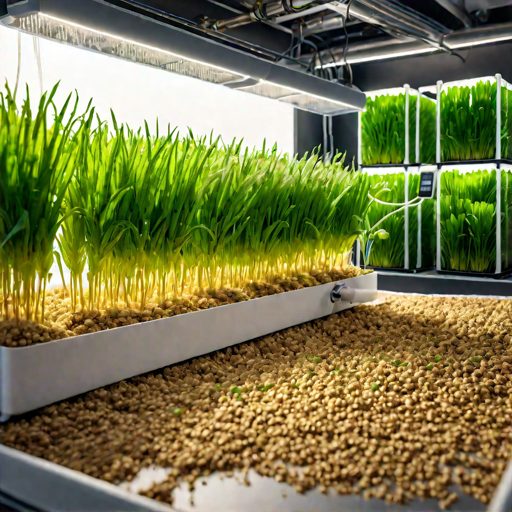
e-Soil

30-12-2023
e-Soil
|
For Prelims: About the e-Soil, How does e-Soil work?, Hydroponics |
Why in the news?
Researchers have developed a new electronic soil that was found to increase the growth of barley seedlings by 50 per cent in a new study.
About the eSoil:
- In hydroponic environments, eSoil is a low-power bioelectronic growth substrate that can electrically stimulate the root system and growth environment of plants.
- This novel substrate is environmentally friendly, being derived from cellulose and a conductive polymer called PEDOT. It offers a low energy, safe alternative to previous methods that required high voltage and non-biodegradable materials.
- It uses low energy and minimizes resource consumption. Its active material is an organic mixed-ionic electronic conductor.
How does e-Soil work?
- When the roots of barley seedlings were electrically stimulated for 15 days, they showed a 50% increase in growth using eSoil.
- This research promotes more effective and sustainable development while increasing the variety of crops that can be grown hydroponically.
- In hydroponics, plants are grown without soil, requiring only water, nutrients and a substrate - something for their roots to attach to.
- This closed system allows water to be recirculated, ensuring that each seedling receives exactly the nutrients it needs.
- As a result, very little water is used and all the nutrients remain in the system - something that is not possible with conventional farming.
- Benefit: It can help in areas with little arable land and harsh environmental conditions.
Hydroponics
- Hydroponics refers to the technique of growing plants without soil using a water-based nutrient solution, an aggregate substrate, or growing media like coconut coir or perlite.
- It uses closed systems that recirculate water to make sure each seedling gets exactly the nutrients it needs.
- This means that very little water is needed and that all nutrients remain within the system.
- Hydroponic systems often use mineral wool as a cultivation substrate in hydroponics.
- But these wools are often non-biodegradable and are produced using energy-intensive processes.
Source: Indian Express